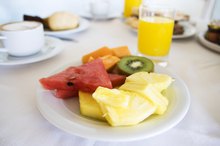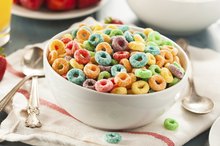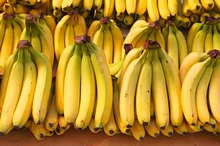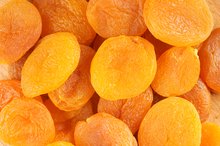Fruit & Fiber Cereals
Breakfast may be the most important meal of the day, and a healthy cereal will get your morning started right. Fruit and fiber cereals offer some of the best nutritional benefits. They are high in fiber, an important nutrient that is lacking in the average American diet. They also tend to offer healthy fats, like omega-3’s, especially if they contain nuts, and other plant-based nutrients not commonly found in their more sugary counterparts. Topped with a calcium-rich serving of milk, fruit and fiber cereal is a nutritional powerhouse.
Fiber
Fiber is a non-digestible carbohydrate. Soluble fiber dissolves in the stomach to form a gel-like net that captures certain fats and transports them out of the body. Insoluble fiber adds bulk in the stomach, so that you feel full longer. It slows the absorption of sugar into the bloodstream and helps with regularity and elimination from the digestive tract. Both types of fibers are beneficial in reducing risk of various chronic illnesses, including heart disease, diabetes and certain cancers. Fiber is abundant in dried fruit, whole cereal grasses and seeds like oats, wheat bran and flaxseed. The Mayo clinic recommends a daily intake of 21 to 25 grams of fiber for women and 30 to 38 grams for men.
Fruit and Nuts
How to Eat Fruit for Breakfast & Lunch to Lose Weight
Learn More
Fruit and fiber cereals are typically lower in added sugars because the sweetness derives from dried fruit. Typical fruit selections are raisins, dates, dried cranberries and other berries. Dry fruits offer a huge range of important vitamins and minerals, including vitamins A and C, folate, thiamine and iron. Nuts add essential fatty acids, vitamin E and other minerals. According to a study published by the U.S. Department of Agriculture, the various nutrients found in fruits and nuts appear to improve immune system function, reducing risk of cardiovascular and other diseases, including cancer. They also keep a number of bodily systems functioning optimally.
Choosing a Healthy Cereal
Reading a cereal’s food label and ingredients list is the easiest way to assess the nutritional profile. While the Food and Drug Administration works to tighten regulations on the health claims placed on food packaging, the ingredients list and nutrition label provide the most accurate information. Fruit and fiber cereals tend to be higher in fat and calories than some sugary cereals because of healthy fats found in nuts, seeds and whole grains. Dried fruit adds natural sweetness, so look for a cereal without added sugar. According to the Mayo Clinic, a healthy cereal will have 5 grams of sugar or less and 5 grams of fiber or more.
Making Your Own Cereal
Can Too Much Fruit Make Your Stomach Cramp?
Learn More
You can make your own high-fiber cereal with fruit in several ways. The first is by simply combining some of your favorite high-fiber cereals and adding your favorite fruits, nuts and seeds to the blend. Store your cereal in an air-tight container. For a homemade granola, a simple recipe is to combine 2-1/2 cups rolled oats, 1/4 cup each of oat bran and flaxseed and 1 cup of chopped nuts in a bowl. Add 1/3 cup each of melted coconut oil and blue agave syrup. Mix well and bake at 325 degrees Fahrenheit on a sprayed cookie sheet for 30 minutes. Let cool. Scoop into a bowl and mix in one cup dried fruits of choice. Keep refrigerated in an air-tight container.
Related Articles
References
Writer Bio
Silvia Nena is a certified fitness nutrition coach. She has over eight years experience as a nutrition and fitness instructor, implementing and running workshops for elementary-age students and their parents, as well as working with individual clients. She is the nutrition writer for "San Pedro Today Magazine," covering fitness, nutrition and overall wellness.









